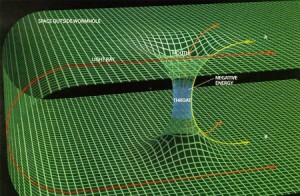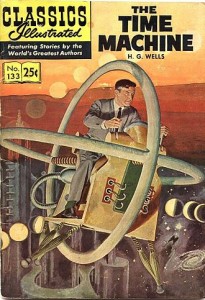With or without a little help from Hollywood or H.G. Wells, most of us have been struck by the fascination and fantasy of time travel. Maybe we yearn to meet our future selves or to chat with long-lost heroes. Tantalizing as that notion may be, few dare to dream of time travel beyond the confines of fiction. What many do not realize is that time travel is not only possible, but it is a direct product of modern physics.
For centuries, classical physics stipulated that time moved like a straight arrow, unchanging and absolute. This all changed in the early 20th century with Einstein’s theory of special relativity. The theory was based on two postulates: that the laws of nature are consistent no matter the constant speed at which you move, and that the speed of light is always measured to be the same rate. From these assumptions, Einstein was able to prove that time is integrally related to space, forming a malleable fabric — space-time — that makes up the universe.

One offshoot of this theory is the phenomenon of time dilation, or the slowing of time depending on an object’s relative motion. Suppose we take a set of twins, Amy and Ally, and put Amy on a rocket ship traveling at nearly the speed of light. When Ally returns, she believes that her trip has lasted a year, while her sister Amy has aged a decade or more. Amy’s speed slowed, or dilated, her experience of time relative to her twin. When we drive a car or fly in a plane, our personal time dilates, too. However, because our motion is so slow compared to the speed of light, these minor jumps are barely noticeable.
For objects moving at inconstant speeds, we can use Einstein’s theory of general relativity, which expands on special relativity’s principles. In this theory, Einstein recognized that the force of gravity could be understood in terms of an object’s acceleration. If motion in space could affect an object’s progress through time, then the gravity produced by a mass could similarly warp the space-time fabric around it. This means that a person at the top of a building experiences time more quickly than someone closer to the earth at sea level, who feels a stronger gravitational force. Of course, this time travel is miniscule compared to that experienced within the enormous gravitational pull of a massive star or black hole.

In this sense, forward time travel is not only possible but happens to us every day. Can we jump backwards in time as well? Perhaps. While several theories have been proposed, the most alluring possibility lies in the formation of wormholes. A wormhole is effectively a tunnel that cuts through the curvature of Einstein’s warped space-time, connecting distant points in the universe. Changing the wormhole into a time machine is then a simple matter of towing it to the edge of a massive star and waiting for the star’s gravity to slow the time of the nearer edge. Once a large time difference is established, the wormhole could be dragged to a convenient location. A time traveler could then move backwards or forwards in time depending on the direction she travels through the wormhole.
Still, physical and philosophical barriers remain. While wormholes are our most feasible time travel option, one obstacle to produce them is that they are very unstable. The presence of a mass inside a wormhole would accelerate its collapse, trapping a human or even a photon traveling at light speed. Philosophical implications also present considerable challenges. The Grandfather Paradox, for example, suggests that if one could travel backwards in time and murder her own grandfather, she could prevent her own eventual birth. Some have countered this paradox by arguing that a time traveler in the past would be restricted to actions consistent with the eventual future, while others have upheld the paradox, citing human autonomy and free will.
Though we may not be close to doing any dramatic time travel in the near future, the current laws of physics certainly do not prevent it. What may be necessary to resolve this matter is the development of what some call a theory of everything: This theoretical, but still undiscovered framework would combine quantum mechanics, or the physics of the very small, with relativity, the physics of the very large. Such a theory holds the promise of either proving time travel impossible or, someday, providing insight into how better to approach it. Until then, the rest of us will just have to wait to run into our future selves in due time.
Cover Image: Art by Alex Allen.
